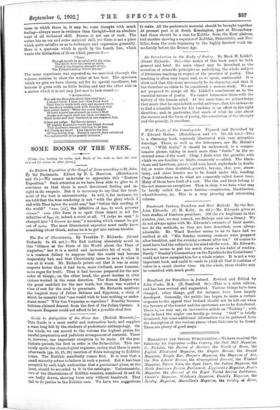Guide to Antiquities of the Stone Age. (British Museum.)— This
Guide is a most useful and instructive book, and supplies a want long felt by the students of prehistoric anthropology. On the whole, we can accord to the volume the highest praise for careful preparation and judicious arrangement of material. There is, however, one important exception to be made. Of the pre- historic periods, the first in order is the Palaeolithic. This cer- tainly spoils the chronological sequence, seeing that there is made afterwards (pp. 10, 25, 28) mention of flints belonging to Eolithic times. The Eolithic manifestly comes first. It is true that a small minority refuse to believe in such a period. But it has been accepted by such high authorities that a provisional place, at the least, should be accorded to it in the catalogue. Unfortunately, two of the illustrations of Eolithic remains, numbered 18 and 19, are badly drawn, showing form only without handwork. They fail to do justice to the Eolithic case. We have two suggestions
to make. All the prehistoric material should be brought together At present part is at South Kensington, part at Bloomsbury. And there should be a case for Eoliths from the Kent plateau, and another showing a sequence of Eolithic, Palaeolithic. and Neo- lithic, from the rude beginning to the highly finished work im- mediately before the Bronze Age.






































 Previous page
Previous page